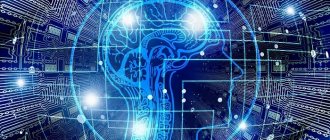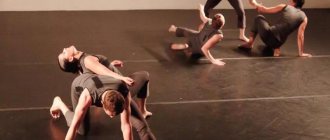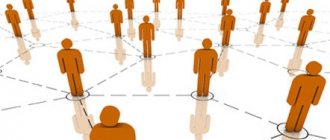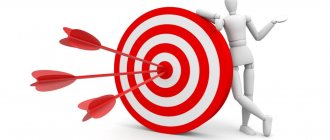Needs as a source of human activity
Need is the state of a person’s need for something that is necessary for his normal physical or psychological existence and development. The name “need” comes from the words “demand”, “demand”, and therefore need means what a person requires, without which he is not able to exist and develop normally as a person. In contrast to a need, a motive of behavior is called something that at a given moment in time prompts a person to act in a certain way, makes his activity purposeful and maintains it at a certain level.
A need can be a potential and real motive for behavior, that is, to act or not act at a given moment in time, to have or not to influence behavior. Motive is always an actual motivational factor. The need gives rise to a general state of unfocused activity, and the motive makes a person’s activity purposeful. According to A. N. Leontyev, a motive is an objectified need, that is, a need that is expressed in a person’s desire for a specific goal. Motives of behavior are what actually underlies it, that is, motives are subjective, psychological formations that initiate, regulate and support human activity aimed at satisfying his needs. Needs, in turn, are objectively acting energy primary sources of behavior, that is, what makes a person active at the moment.
Organic are the needs associated with self-preservation and development of the body. These include the needs for everything that the body needs, including food, water, oxygen, a certain temperature, the need for procreation (sexual, or sexual, need).
Organic needs sometimes also include the needs for conditions that ensure the safe existence of the organism (security needs).
The organic needs of humans are practically no different from the corresponding needs of animals, except that in humans these needs are associated with specific conditions for their satisfaction, for example, hygienic ones, and with some specific means of satisfying them, for example, culinary processing of food.
Material needs are those needs that are satisfied with the help of things created by human labor. This is, for example, the need for clothing, housing, tools and various types of machines, and many other things that people need in everyday life and at work, as well as during leisure. We are talking about objects of human material culture, about their necessity for every civilized person.
Social needs are those associated with a certain lifestyle and a person’s position in society. This is, for example, the need for communication, attention from people around, recognition, respect, authority, power, etc. These needs appeared and began to develop in people since the emergence and development of human society. Thanks to the presence and satisfaction of these needs, a person can live among people, and people as a whole maintain and improve the social way of their existence. This, in turn, makes people's lives safer and more prosperous than if each person lived and existed on his own, without communication and interaction with other people.
Creative needs are those that are satisfied in various types of human creative activity: scientific, technical, artistic. A person, especially if he is a highly developed personality, cannot exist normally without creativity. For such a person, the need for creative activity is sometimes the main, fundamental one in his life and dominates over all other needs. People of this type are ready to live from hand to mouth, to risk the security of their existence, to have a minimum of material resources for life - if only they were given the opportunity to freely engage in creativity.
The needs of psychological development and moral self-improvement are understood as needs, by satisfying which a person ensures his own cultural and psychological growth, strives to make himself a morally responsible and morally perfect person. These needs lead some people to religion. It is these needs that become main and relevant for a person who has reached the highest level of personal development. Currently, a humanistic theory of personality has developed and is very popular among psychologists, in which the presence of such needs in a person is proclaimed as a sign of the highest level of psychological development of a person, the main goal and main task of his life.
Diagnostics
Psychodiagnostics deals with methods of studying the properties of the psyche and personality.
The test consists of forming a scale that is formed when answering questions. This scale reflects certain character traits, personality orientation, and its volitional, emotional or behavioral characteristics.
These include the Binet-Stanford intelligence test, the Luscher color test (emotions), the extra- and introversion scale, the test of temperament types and many others. Some of them are processed on a computer to obtain results.
Projective techniques - drawings, role-playing games or stories. Their meaning lies in the projection of their mental traits and relationships onto the task. Their founder was K. Jung, who proposed psychodiagnostic conversations, then Rorschach created his “ink blot” test and Rosenzweig created his frustration test.
Later, many variations arose with the task of describing vague pictures, drawing a person, a tree, a family, etc.
Psychology has classified many different personality traits. Thanks to different approaches and methods, the very concept of personality has also been significantly enriched. The practical application of this knowledge is relevant for self-knowledge, in the work of psychologists, as well as in psychotherapy and psychiatry in order to clarify the diagnosis and treatment.
Biological and social in the structure of personality
The problem of the relationship between the biological (natural) and social principles in the structure of a person’s personality is one of the most complex and controversial in modern psychology. A prominent place is occupied by theories that distinguish two main substructures in a person’s personality, formed under the influence of two factors - biological and social. The idea was put forward that a person’s personality breaks down into an endopsychic
and
exopsychic
organization.
Endopsyche as a substructure of personality expresses the internal interdependence of mental elements and functions, as if the internal mechanism of the human personality, identified with the neuropsychic organization of a person. Exopsyche is determined by a person’s relationship to the external environment, i.e. to the entire sphere of what confronts the personality, to which the personality can relate in one way or another. The endopsyche includes such traits as receptivity, characteristics of memory, thinking and imagination, the ability to exert volition, impulsiveness, etc., and the exopsyche is a person’s system of relationships and his experience, i.e. interests, inclinations, ideals, prevailing feelings, formed knowledge, etc. The endopsyche, which has a natural basis, is determined biologically, as opposed to the exopsyche, which is determined by social factors. Modern multifactorial theories of personality ultimately reduce the structure of personality to projections of the same basic factors - biological and social.
The human personality, being both a product and a subject of the historical process, could not preserve a biological structure, adjacent and equal to the social substructure. The natural prerequisites for the development of an individual, his bodily organization, his nervous and endocrine systems, the advantages and defects of his physical organization powerfully influence the formation of his individual psychological characteristics. However, the biological, entering the human personality, becomes social. Thus, brain pathology gives rise to individual biologically determined psychological traits, but they become personal traits, specific personality traits, or do not become due to social determination.
Example: a study that studied the formation of personality traits of people whose height did not exceed 80-130 cm. A significant similarity was found in the individual traits of these people who, apart from short stature, had no other pathological abnormalities. Many of them exhibited specific infantile humor, uncritical optimism, spontaneity, high endurance in situations requiring significant emotional stress, the absence of any shyness, etc. These features cannot be attributed to either the endopsyche or the exopsyche, if only because, being the result of the natural characteristics of dwarfs, they can arise and be formed only in the conditions of the social situation in which dwarfs find themselves from the moment when the difference in height between them and their peers. It is precisely because those around him treat the dwarf differently than other people, seeing him as a toy and expressing surprise that he can feel and think the same way as others, that dwarfs develop and fix a specific personality structure that masks their depressed state , and sometimes an aggressive attitude towards others and towards oneself. If you imagine for a moment that a dwarf is formed in a society of people of the same height, then it will become quite obvious that he, like everyone around him, will develop completely different personality traits.
Natural organic aspects and traits exist in the structure of the individuality of the human personality as its socially conditioned elements. The natural (anatomical, physiological and other qualities) and the social form a unity and cannot be mechanically opposed to each other, as independent substructures of the personality.
In the process of developing objective science, almost all possible connections between the concepts of “mental”, “social” and “biological” were considered:
- mental development was interpreted as a completely spontaneous process, independent of either biological or social,
- it was interpreted as a derivative only from the biological,
- or only from social,
- or from parallel influences of biological and social.
In the first group of concepts, which prove the spontaneity of mental development, the mental is considered as a phenomenon completely subordinate to its internal laws, which are in no way connected with either the biological or the social. The body was usually considered as a kind of “container” of mental activity. The views of ancient philosophers and theologians can be attributed specifically to this group, because the sources of the development of the psyche were sought only in the psyche itself.
In biologizing concepts, the mental is viewed as a linear function of the development of the organism, as something that unambiguously follows this development. All features of mental processes, states and properties of a person are determined by the features of the biological structure, and their development is subject exclusively to biological laws. Often, laws discovered in the study of animals are used, which do not take into account the specifics of the development of the human body.
Biologizers argue that the mental as an independent phenomenon does not exist in nature, since all mental phenomena can be described or explained using biological (physiological) concepts.
In contrast to the biologizing ones, as already mentioned, there are sociologizing concepts that assert the priority of the social over the biological.
Examples of similar educational works
Development of everyday activities in preschool age (from birth to 7 years)
...activity through proper organization of the daily routine. Development of everyday activities in infancy From the first day, an adult organizes life... That is, the baby develops a need for cleanliness and tidiness. Formation of cultural and hygienic…
Seminar 1: personality development, leading activity, education, training
... the child’s well-being. Is the principle “personality is formed through activity” violated in this case? Has the young woman allowed herself to age? We can talk about: the arbitrariness of human behavior, the development of “genuine” independence and responsibility for actions. ...
Didactic games that promote the development of visual activity mentally...
...second grade in a special (correctional) school. The subject of the study is didactic games that promote the development of visual activity of mentally retarded schoolchildren. Hypothesis - it is suggested that the use in lessons ...
Psychological impact on personality in legal activity
... the real place of this person among other people, her social status is affected ... 3. Baskov V.I. Operational search activities: Educational manual. - M.: Beck, ... were almost not considered. With the development of democratic democracy in our country...
Personality psychology in law enforcement
... positions, algorithms of actions and deeds of a person that have developed throughout life and determine his behavior and activities, regulation and self-regulation. The individual psychological side of a personality reflects the specifics of the functioning of its mental...
"I-concept"
"I-concept"
is a dynamic system of a person’s ideas about himself, which includes a person’s awareness of his qualities (physical, emotional, intellectual), self-esteem, as well as subjective perception of external factors influencing a given personality.
“I-concept” is close to the concept of “self-awareness”, but rather “I-concept” is the result of self-awareness.
“I-concept” arises as a result of a person’s social interaction with his environment. The environment influences the formation of the “I-concept”, however, then the “I-concept” begins to determine the way a person interacts with the social environment.
Professional orientation
Each profession requires the possession of specific character traits that are necessary to achieve success in that field. In psychology, several personality types are defined:
Realistic type
They prefer physical labor and working with real objects. The following professions suit them most: builder, technician, mechanic.
Conventional type
The personality is attentive, focused and calm in nature. Such people are responsible and always complete their work on time. Preferred professions: librarian, merchandiser.
Intelligent type
These people love to think and learn new information. They love to do research work. The most suitable professions: teacher, writer.
Enterprising type
Such individuals have leadership qualities and are excellent at managing. The following professions are suitable: manager, businessman.
Social type
People with a well-developed sense of empathy who strive to help others. The following professions are suitable: doctor, social worker.
Artistic type
Such individuals do not like to work according to a schedule and put themselves into any kind of framework. They are unpredictable and creative. Best professions: artist, poet.









